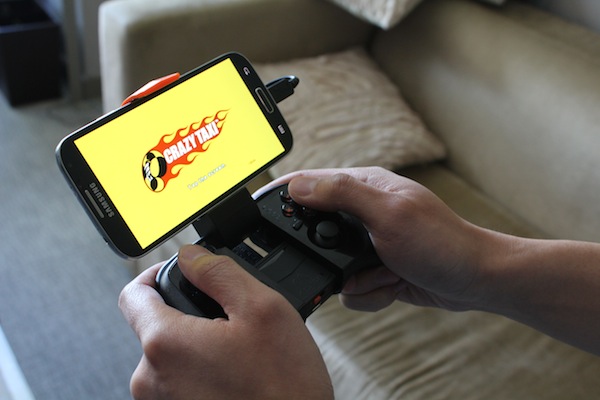Moga Power Android Game Controller Hands-on
These Android gaming controllers will charge your phone while you play.
Smartphones have redefined mobile gaming, but the one weakness of these touchscreen devices is the lack of physical controls around which many games are still designed. For those who want physical controls when gaming, Moga has a new solution that will also charge your phone while you play.
Moga's been one of the pioneers in mobile gaming controllers, and today we got a chance to go hands-on with the company's second generation offerings for Android gamers. Just like the previous generation, the Android controllers come in two different sizes, and both feature a clip that holds the phone in a landscape orientation.
MORE: 15 of the Best Android Games for Smartphones and Tablets
There are a bevy of improvements in the new versions, but the main raison d'etre is that the controllers can now output power directly to not only stop battery drain while gaming, but to actually charge your phone with its 5 V at 500 mAh output. The controllers can also charge when not in use, meaning that they can be your spare battery charger if you're ever in need of an emergency top up. This is accomplished with a standard USB to micro-USB cable, and two are included in the box: one that's 6-inches long for in-clip charging and another that's 6-feet long for tablet use or standalone charging.
Moga Hero Power

The Moga Hero Power is the smaller of the two offerings and features more dramatic improvements over the older model. Whereas the older model felt like a watered down version of a game controller, the updated Moga Hero Power now has clickable thumbsticks and all four shoulder buttons as opposed to the older one's two-button setup. The face buttons are also much improved over the previous model, now more distinctly raised from the controller for greater travel and tactile feel. The smaller Hero Power packs an 1800 mAh battery, which is enough to nearly double the battery life of older Android phones with similar battery capacities (such as the Galaxy Nexus or Samsung Galaxy S2).
Moga Pro Power
Sign up to get the BEST of Tom's Guide direct to your inbox.
Get instant access to breaking news, the hottest reviews, great deals and helpful tips.

The Moga Pro Power is the larger model and keeps much of the same design and features from the older Moga Pro controller. The button layout is the same, but small tweaks to the d-pad, buttons and trigger feel make the newer model feel significantly better for extended gaming sessions. The larger size also means a larger internal battery of 2200 mAh, which is big enough to double the battery life of newer Android phones such as the Samsung Galaxy S4, Google Nexus 4, and HTC One.
Both new models also have slightly improved clips that can accommodate slightly larger devices. While the older models are able to hold the Samsung Galaxy Note II, adding a hefty case like an Otterbox kept it away from Moga gaming. The new models are able to accommodate the big phone even with the big case, which bodes well for those who are worried about future compatibility of phablets that are slightly larger than the Galaxy Note 2.

New for this generation is the support to play multiplayer from the same machine using multiple controllers. Each controller has an indicator light that will denote players one through four. While multiplayer gaming isn't likely from a smartphone, they also work with tablets – and there's always the option of outputting to a TV for some couch-side gaming with your friends.
Moga wouldn't give us a specific release date aside from sometime this fall, nor were we given a price. The new Power series is supposed to exist alongside models that don't feature such large internal batteries that have charging capabilities. The current Moga Pro sells for $50 and the smaller model sells for $30. Expect the new Power series to command a small premium above those prices.
Marcus Yam is a technology evangelist for Intel Corporation, the latest in a long line of tech-focused roles spanning a more than 20-year career in the industry. As Executive Editor, News on Tom's Guide and Tom's Hardware, Marcus was responsible for shaping the sites' news output, and he also spent a period as Editor of Outdoors & Sports at Digital Trends.
-
eklipz330 it would have been cool if it had qi charging without the cable. honestly, it doesn't seem like that bad of a deal, except how many games use a control pad?Reply -
hoofhearted Coupled with Drastic (ds emulator) and FPse (ps emulator), this actually makes Android gaming actually viable. Android games these days are filled with freemium, microtrans, DLC, and such. I wish they would do games like they used to -- pay for the game once then you're done with the "real money" aspect. Emulators are its saving grace.Reply -
becherovka The Moga guy seems genuine and honest. Good mobile gaming, not something I would personally buy. But I can see android being the gaming platform for the lounge room in a few years (maybe more). A dongle in your tv and away you go, and then you can continue when your on the train ect.Reply -
Bloob It's better that virtual controllers, but if you wanted to make that sort of a game then why not use a platform that is more suitable for your game.Reply
